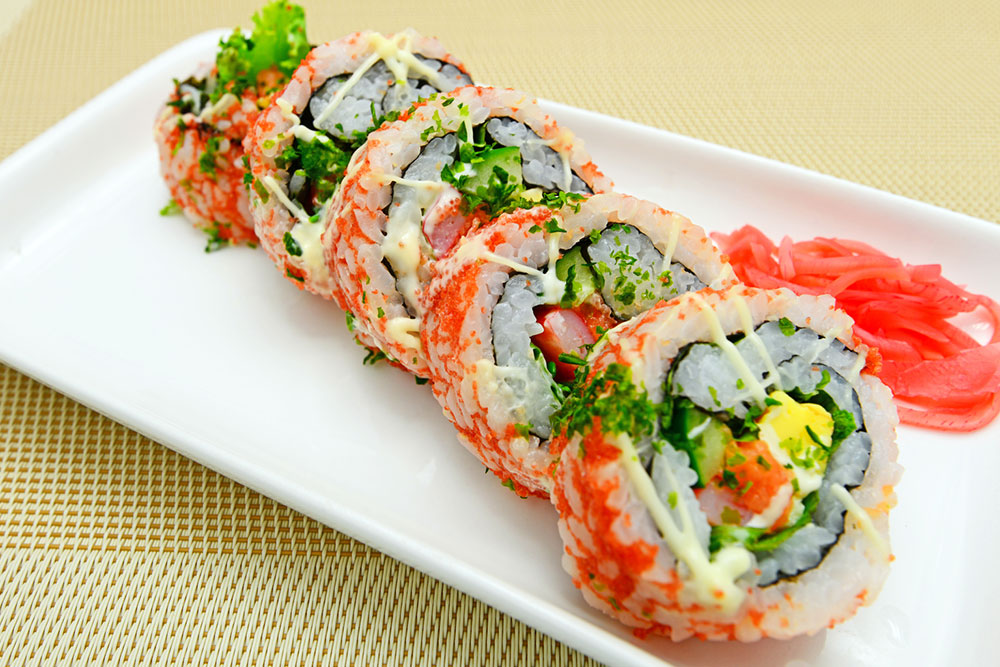7 foods to avoid on a cruise

Going on a cruise vacation can be an exciting holiday experience for anyone, whether they are traveling solo or with someone. However, there are certain things that one needs to be careful about while on a cruise. For instance, it is essential to make wise food choices to avoid any unpleasant experiences. In this regard, here are some foods one can avoid on a cruise to ensure a safe and healthy vacation at sea.
Sushi
Raw seafood served in the form of sushi is a delicious delicacy that many, many restaurants offer. However, when it comes to eating raw food on a cruise, it is best to avoid it. Although cruise restaurants follow the same food safety protocols as any other restaurant, it is important to note that the risk of eating raw food remains the same whether one’s on land or at sea. On a cruise, managing symptoms of sickness can be difficult, so it is always recommended to be extra cautious and vigilant when it comes to food choices. A small bug can ruin the entire tour experience.
Communal condiments
One must keep in mind that condiment bottles on a cruise ship are high-contact items. Many people touch these bottles, which increases the odds of getting food poisoning. While the food itself may be safe to eat, the hands that have touched these bottles may be carrying infections or communicable diseases. To reduce the risk of contracting an illness, it is best to avoid using communal bottles whenever possible. Instead, ask the kitchen staff for single-serve sachets of condiments. If sachets are not available, use a tissue to hold the bottle, and be sure to sanitize hands or wash them thoroughly after use.
Soft serve ice creams
Just like communal condiments, avoiding soft-serve ice cream machines is advisable as they can be a breeding ground for infectious diseases. The handles of these machines are touched by numerous people, and as a result, the germs can easily spread. Similarly, the cones can also pose a health risk as they are handled by many people. It is possible that people may have touched more than one cone, which can lead to the transmission of germs and bacteria.
Moreover, using the same hand to handle the dispenser and the cone can also lead to the spread of germs. To avoid any health risks, it is recommended to clean the handle of the dispenser with a hand sanitizer before use. Another safer option could be to skip the cone and take the ice cream in a new, clean bowl.
Eggs
When eggs are fully cooked, the risk of contamination with salmonella is less. However, the risk increases when consuming runny eggs or sunny-side-up where the yolk is not fully cooked and can potentially spread infection. The safest option is to opt for hard, boiled eggs. However, the best way to completely avoid getting sick is by avoiding eggs altogether.
Buffet salad
These are high-contact food items that can contain the risk of being contaminated easily. In a buffet, there is a high chance of cross-contamination, which can be extremely dangerous for those with food allergies. This is because someone may unknowingly use the same spoon to serve different food items, leading to a food allergy accident that can become difficult to manage on a cruise. This is especially hazardous because some of the allergies can be severe and require immediate emergency care, like when a person stops breathing. Therefore, it is best to avoid salad bars, as well as vegetables and fruits that are known to cause allergies or trigger any kind of reaction.
Trigger foods
It’s important to remember that while everything in a buffet may look delicious, certain foods could trigger an allergic reaction. It can be easy to forget these small details while celebrating or on vacation, but it’s not worth the risk. Triggering foods can cause sickness, which can be challenging to manage. If one has a list of foods to avoid, make sure to follow it even on a cruise vacation. It’s a good idea to share this list with travel companions so that they know what foods to avoid.
Spices
High-fat and spicy foods may seem tempting while on vacation as they are only consumed a few times. However, these spices may not be agreeable to one’s system within this short duration of time. They can cause stomach aches or even loose motions if one is not accustomed to such flavors in their food. It is always good to try something new, but one must also be mindful of the quantity and quality of what they are consuming.
Always carry some basic preventive care products while traveling to ensure that any accidents can be managed and avoided. While it is important to have fun and be adventurous on vacation, it’s equally important to be mindful of any health challenges that could dampen the spirits during the tour. Therefore, it is recommended to take calculated risks when trying new food items or traveling on a cruise. Moreover, one must consider doing a thorough health checkup before boarding the cruise or consult a nutritionist for a meal plan, if required.







